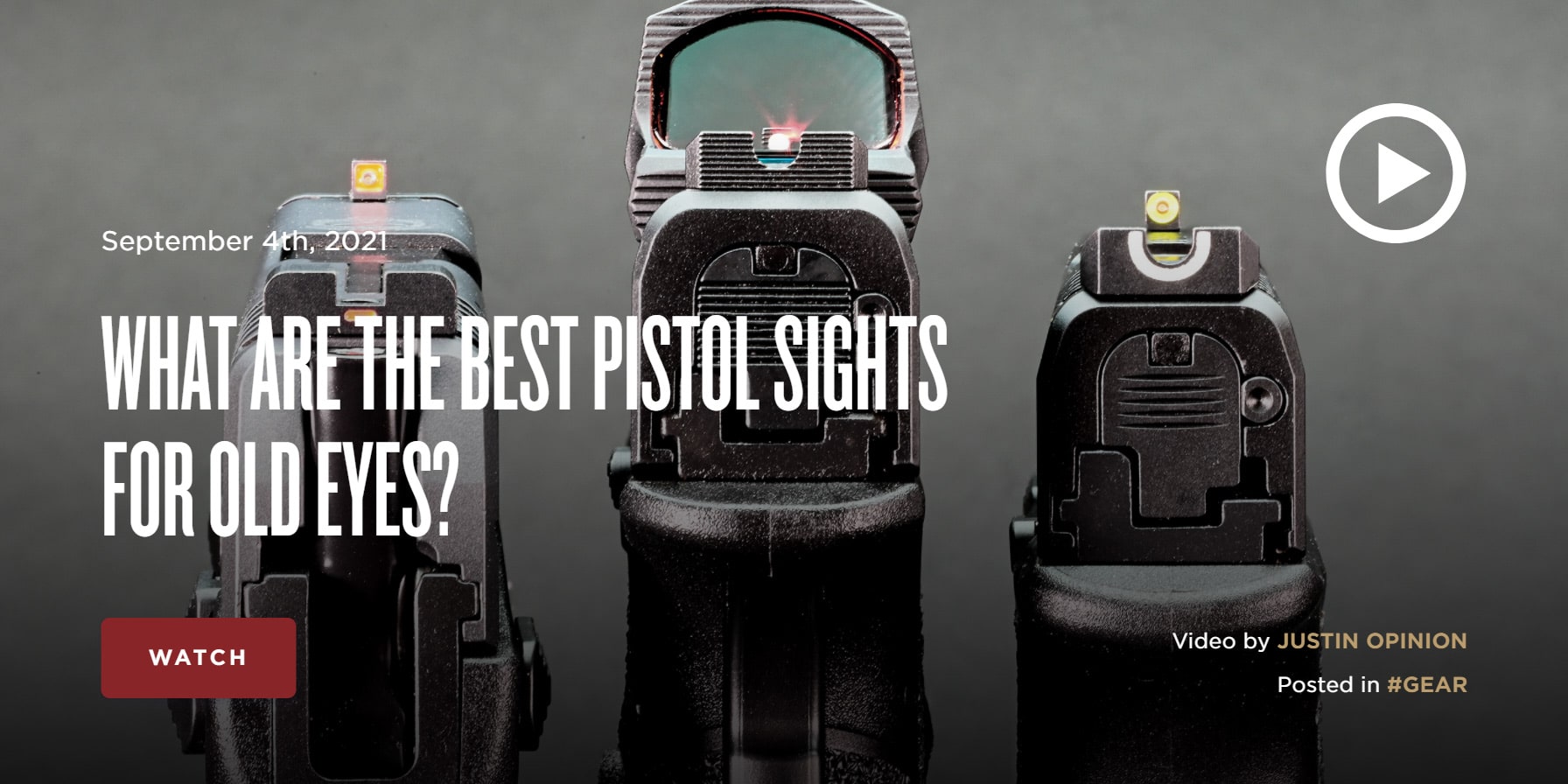Hello all, here is today's article posted on TheArmoryLife.com. It is titled "What Are the Best Pistol Sights for Old Eyes?" and can be found at https://www.thearmorylife.com/what-are-the-best-pistol-sights-for-old-eyes/.



Nice, bet that front sight stands out in the sun, was that factory?Good article, it's something I am in fact starting to deal with. I have always preferred a black rear sight with a gold bead front. But with continued shortening of my arms I got sonething different on my latest revolver. I went with a black rear with a bright neon green front sight which seems to be working well for me.
This is why no matter how determined I am to get another 1911 as my next pistol I keep having these niggles of doubt that I should just bite the bullet and jump into a modern poly pistol, replete with a red dot, cowitness sights, and a rail for a light.
No, it's a sight Magnaport international sells, the name Is CMore sights. I saw them when I took the 60 in to them and really liked it. There are various colors but the green worked best for me.Nice, bet that front sight stands out in the sun, was that factory?
Welcome, The nice thing about them is they are polymer and you can easily file them for adjustment.Nice, very nice, I will be looking into them for my S&W 610, thanks
Good article, it's something I am in fact starting to deal with. I have always preferred a black rear sight with a gold bead front. But with continued shortening of my arms I got sonething different on my latest revolver. I went with a black rear with a bright neon green front sight which seems to be working well for me.
This is why no matter how determined I am to get another 1911 as my next pistol I keep having these niggles of doubt that I should just bite the bullet and jump into a modern poly pistol, replete with a red dot, cowitness sights, and a rail for a light.
My Hellcat has the WASP dot, and I still can't get used to using it, I'm better, but not where I would like to be right now, got to keep practicing with it I guess. Still having issue of when I bring it up.
Interesting, thanks.I'm far from a pro at the pistol-slide mounted micro-RDS, but from my understanding, it's all about consistency - that you want to be able to consistently hit that spot in your presentation where the dot properly appears for you.
Here's where the idea of "only perfect practice makes perfect" comes in: in order to truly burn-in the consistency, you absolutely have to make sure that -particularly as you start- everything is absolutely perfect.
For every rep where not everything is perfect, you're essentially teaching your brain/muscles that alternate pathway, and you're throwing in inconsistencies.
Personally, I subscribe to the backwards-engineering of the draw-stroke: to start at full-presentation, with the sights aligned and the trigger prepped, and to go "back to the holster" from there.
For the dot, my goal is to visualize the dot on-target for as long as possible working backwards. In full TENET fashion, this should translate to my picking up the dot as soon as possible in the presentation, going forward.

I am extremely far-sighted with plenty of astigmatism as well. I can't really see the rear sight most of the time.^ As I've written elsewhere, my eyes are going, too.
Luckily for me, my rather severe nearsightedness has helped stave-off the worst of it....well, for the time being, at least.I find that while I'm starting to peek over my glasses to load my microsurgery instruments, the front sight on my pistols (my EDC and HD pistols both carry .100-width front posts) are still reasonably crisp .
At some point, I think that switching to a modern "windows" setup (i.e. micro-RDS) will become a necessity - and I started training a new draw-stroke/presentation towards that as of a few years ago, but even so, I still wonder just how much that change may benefit me.
The problem for me is that I have significant astigmatism as a result of my severe nearsightedness. Hence, even a true-holographic dot appears more like a comma/comet to me. While proper threat-focused technique has somewhat mitigated this concern (and luckily for me, the comma/comet typically has a consistent reference point, whereas I know that for other shooters with astigmatism, their unique presentation of the disease may cause them to inconsistently visualize even the same sight, from presentation-to-presentation), where it comes to the low-percentage shot, it does give me pause.
And that's where it gets me.....
In Pat McNamara's "Pistol Taps" DVD for Panteo Productions, he shoots a demo at 7 yards with an iron sighted Glock 17/19. He's literally drilling the same hole, clover-leafing, at this distance. He's placing the shots at about a 1-second cadence, and he's running through the entire mag, shot after shot after shot, live on-screen. He's doing this -he mentions as a complete side-note- with his 50-year-old (at that time) eyes which can no longer resolve the front sight post!
For the time being, I really do still very much like my Dawson's - I've really grown to love the speed of the narrow front post/wide rear notch of my setup, and the front fiber-optic really helps catch my eyes. Similar to @HayesGreener, I also really like the Trijicon HD, in particular their XR variant.
I guess I'm just going to have to see what the coming years bring.
